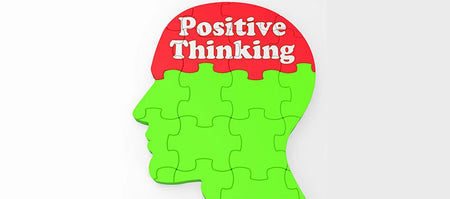Latest Posts

In Your Corner, Student Learning
A More Accurate Indicator of School Performance
As a nation, we are preoccupied with test scores: maybe even consumed by them. We use test scores to rate and rank schools. We track test score trends to see if schools are improving, staying flat, or in decline. We use test scores to market schools. We even use test scores to shame schools that appear not to be measuring up. But what if we are monitoring the wrong indicator, or at least not the best measure of school quality and performance?
We know that there is a high correlation between test scores and the socio-economic status of students’ families. This correlation has consistently fed the perception that families with financial means choose or demand schools that are effective and the best schools serve middle and upper-middle-class families. On the surface, the connection seems obvious.
However, two recent studies call this perception into question. The first study, conducted at Stanford University, looked beyond test scores to measure school effectiveness. The research focused on the learning growth demonstrated by students over a period of years. The study included achievement data for students in grades three through eight from 11,000 school districts.
The research concluded that despite where students started on the performance continuum relative to other students, their academic growth over time was not predicted by their third-grade scores. In fact, students in many schools and school districts in high poverty areas demonstrated more growth than their counterparts in wealthier neighborhoods and communities. Yet, their growth was not necessarily reflected in the highest test scores.
While early childhood and initial elementary grade performance is heavily influenced by community socio-economic-related factors, such as income and family education levels, growth between third and eighth grade appears to have minimal relationship to these factors. The perception that students in poverty are not capable of learning at a rate comparable to more economically advantaged students appears not to be accurate.
A second study conducted by St. Louis University earlier this year found similar patterns in schools in the St. Louis metro area. In multiple schools with high concentrations of families in poverty, students demonstrated growth that in many cases exceeded learning growth in schools that served students from more economically advantaged families.
These and other studies call into question the wisdom of relying on test scores as the sole or even primary measure of school effectiveness and quality. In fact, some schools with higher test scores may be generating lower learning growth trajectories than schools with lower test scores.
So, what should educators, parents, and communities take from these findings? First, we need to focus on learning growth data rather than rely solely on current test scores as proof of effectiveness. We cannot determine what happens in the lives of students before they reach us, but we can focus our attention and efforts on ensuring that they are making progress each day, week, and year.
Second, we need to coach students to focus on their learning growth. When students see their progress and understand their power to determine their progress, we can help them to counter the confidence-sapping impact of comparisons with other students who may be at different points on the academic performance continuum. Of course, over time learning growth will also translate into better test scores.
Third, we need to advocate for accountability systems that consider the trajectory of student learning and not solely reflect the advantages that families and communities provide before students start formal education. If we want to make responsible comparisons of school performance, learning growth must be given at least equal status to test scores.
The bottom line: We should not continue to ignore the importance of learning growth as we consider the performance of schools. Test scores have a role to play, but the extent to which socio-economic status correlates with and in many cases accounts for performance on standardized assessments must also inform any judgements we make about how well schools are performing.

In Your Corner, Teacher Learning
Five Ways to Keep Your Learning Fresh
There is an adage that if we are not moving forward, we are likely moving backward. Each day and each year bring new challenges and demands for more and better approaches, strategies, and skills. What we have learned in the past may have served us well, but each year there is more to learn, and there are more reasons to learn. If we do not keep learning, we risk becoming stale and left to rely on a limited set of options to respond to novel and increasingly complex challenges.
People who have studied workplace learning observe that we must increase our professional and technical knowledge and skills at least 25% each year just to avoid falling behind. Depending on the year and the nature of our work, the amount we need to learn may be more. The bottom line is that we need to continually learn and to keep what we learn fresh. Here are five strategies we can employ to ensure that our learning continues to grow and stays vibrant and accessible.
First, we can challenge ourselves to learn something new and significant each week. Obviously, we are likely to learn more than one thing each week, but by setting a goal and paying attention we are more likely to notice, appreciate, and retain what we learn. Two reflection statements can assist us in this pursuit. The first is: I used to believe _______, but now I know _______. The second is: The most important insight I gained this week was ________, and I will use it to _______. Over time, our weekly learning will accumulate and lead to an increasingly wide array of ideas, insights, and options to inform our thinking and work.
Second, we can engage with educators who are not of our generation in conversations, activities, and projects. If we are new to our career, experienced professionals can often offer insights, experiences, and wisdom that can accelerate our learning and build key skills. If we have years of experience in education, new to the profession educators can offer new perspectives and ask questions that lead us to reflect and question common practices and approaches. Equally important, we can discover learning partners who might join us on our learning journey.
Third, we can use and share what we learn. We have all heard or experienced something new, only to forget it in the weeks and months that follow. If we want to remember and have accessible what we learn, we need to do two things. We need to share new learning with someone as soon as practical. Sharing new learning offers multiple benefits, including providing a reason to organize what we have learned in our mind. It can also lead to new insights and create a new and deeper level of understanding. We also need to apply new learning. When we do, we gain an even deeper understanding and develop a richer context to what we have learned. Our brains respond to learning that has meaning and purpose. Sharing and using what we learn sends a message to our brain that this learning is important and needs to be stored.
Fourth, we can expose ourselves to perspectives and opinions that are not obvious or aligned with our assumptions. Most people tend to seek out ideas and perspectives that reinforce what they already know and believe. The information we absorb may make us feel good. However, significant learning is more likely to occur when our assumptions, understanding, and perspectives are challenged. When we are exposed to ideas that push our thinking or challenge our current knowledge, we may find that our thinking changes, or it may be that we reach a better, deeper understanding of what we already know.
Fifth, we can engage in learning experiences outside of education. We may not think that we have time to explore ideas and approaches embedded in other disciplines and areas of endeavor. Yet, other fields often encounter challenges that parallel, or at least relate to problems we face. By exploring how others outside of education view problems like motivation, performance, interpersonal conflicts, and other issues, we may discover options and alternatives we have not considered.
We are committed to developing in our students the motivation and skills to become lifelong learners. What better model can we offer than to demonstrate our commit to be learners for life?
Share Your Tips & Stories
Share your story and the tips you have for getting through this challenging time. It can remind a fellow school leader of something they forgot, or your example can make a difficult task much easier and allow them to get more done in less time. We may publish your comments.
Send Us An Email













